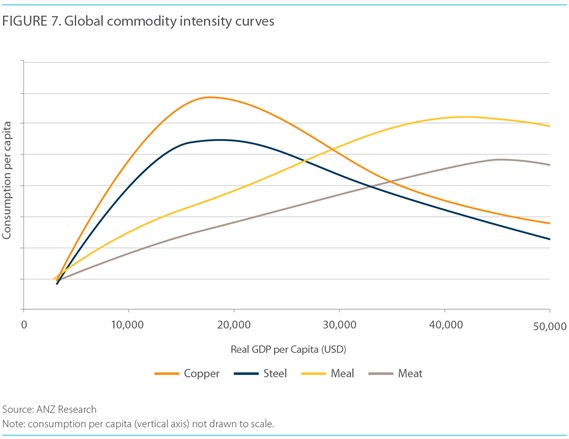-
The mining investment boom has peaked. Not so agriculture, which for many is the “next boom”. Consumption of agricultural produce will not reach its peak in Asia for another 40 years. And the implications for the future of farming in Australia are huge.
There has long been an interest in a sometimes over-hyped ‘Asian Food Bowl’ but the incoming China FTA with Australia is already adding to the momentum and demand for agricultural land in northern Australia.
"For Asian investors primarily concerned with food security, investment might yet occur regardless of current profitability."
Paul Deane, Senior Agricultural Economist{CF_IMAGE}
An ANZ Research study analysing the potential for Australia’s two largest agricultural sectors – grain and oilseeds, and beef – to expand production in Northern Australia found both are sectors where Australia has a proven competitive advantage and readily available markets.
Australia is well-placed to replace the supply of grains and oilseeds - essentially protein meal - to the markets of Asia, which is currently sourced from the Americas, given the amount of land available for production. However, the decline in prices over the past two years leaves profitability too low for Australian private sector investment in the region for most of the traditional bulk agricultural markets. Although for Asian investors primarily concerned with food security, investment might yet occur regardless of current profitability.
Given these market conditions, there is a role for government according to ANZ Research.
While profitability remains low, government attention should be directed towards research and development – investment that has historically attracted returns upwards of 12 per cent.
Beef is a different story. With record high prices, the potential for beef in Northern Australian agriculture is considerable. Enough suitable soils exist to support the equivalent of another Australian wheat crop sown every year.
Dirt, however, is not the whole story. Illustrating the potential of the region by looking at the amount of land available is misleading. Water, not land, is the major constraint in expanding food production.
ANZ Research found if producers up north were to incorporate mosaic irrigation in order to produce forage crops for cattle to graze, they could see financial returns of between 7 and 12 per cent per annum.
In fact, on a long term horizon, early estimates suggest approximately 15,000 gigalitres per annum of water could be harvested and made available at farm gate across the entire region. This would equate to an additional $A2.5 - 4.0 billion per annum or between a 60 per cent to 80 per cent increase in Australian beef exports.
The opportunity for both industries only increases with the government’s recent announcement of new access to the Chinese market, likely to boost prices as demand goes up significantly. Recent trade deals mean that producers will also have more diverse sources of revenue. These higher prices will help to unlock capital and lure greater foreign investment to the northern shores.
Paul Deane is Senior Agricultural Economist at ANZ.
The views and opinions expressed in this communication are those of the author and may not necessarily state or reflect those of ANZ.
-
anzcomau:Bluenotes/global-economy,anzcomau:Bluenotes/global-economy/agriculture,anzcomau:Bluenotes/global-economy/economics,anzcomau:Bluenotes/global-economy/trade
MoleHill to Mountain: What lies ahead for northern Australian agriculture?
2014-11-27
EDITOR'S PICKS
-
There is an apparent disconnect between the optimism around the Asian dining boom and the pessimism of many Australian farmers, at least as it is portrayed in the media.
9 May 2014 -
-
There is a saying that good things come to those that wait. The free trade agreement between Australia and China, ten years in the making, has been well worth the wait.
18 November 2014

